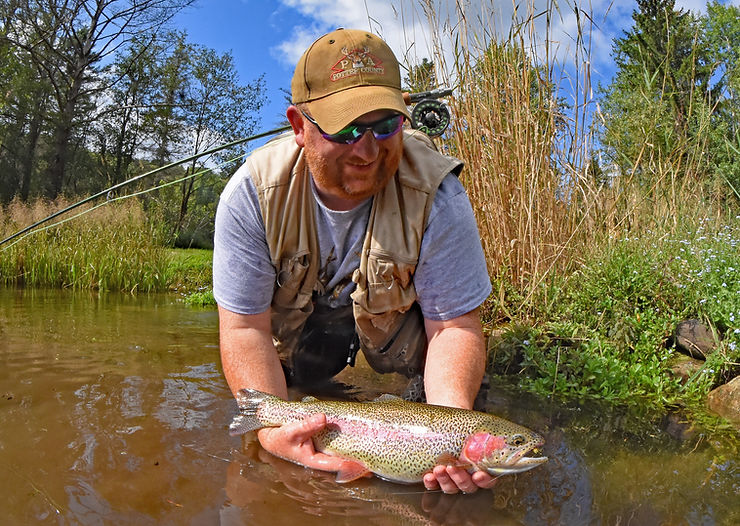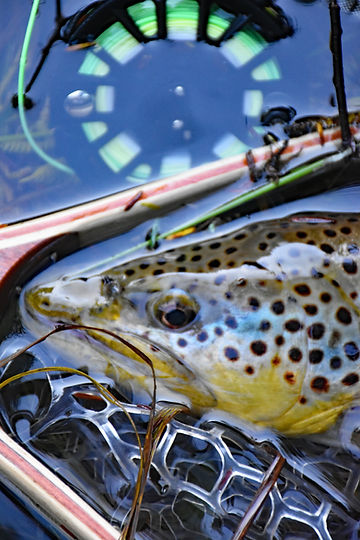Hooking and Landing Big Fish

I’ve been fortunate to catch many big fish on a fly rod in my lifetime. Even still, for as many that have found the bottom of my net, just as many have won the battle and left me heartbroken. Every time I tangle into a heavy trout I have to slow things down in my head and focus on what I need to do to land that fish.
The first step, of course, is use tackle capable of landing 20-inch trout. For years I used an 8-foot 3-weight rod. It was great for delivering soft presentations on small streams but lousy if I hooked into anything longer than a foot. It just didn’t have the necessary torque to drive the hook home and keep it there, especially in swift current. On bigger streams, forget it – I was pretty much helpless, and if I actually landed a big fish it was more luck than skill.
Tackling Big Fish
For me, the perfect outfit is a rod in the 8.5 to 9-foot range and 5 or 6 weight. Rods in this range make fishing bigger water easier and have the backbone necessary to land big fish in fast currents. Also, sometimes you have to horse big fish in order to get them in, and you can’t do that with a 3-weight rod.
Big trout are strong fish with lots of stamina. The longer you have them on the line, the better the odds of them getting off. Also, these Keystone Select streams are catch and release most of the year, which means I don’t want to totally exhaust the fish when I catch it. I want it to still have some fight left so it can recover faster upon release.
Sometimes it can be hard to rush things if you’re using a light leader and tippet. Even still, you’d be surprised how much pressure you can apply before snapping the line. A good practice is to hook your fly on something in your front yard. Stand back about 10 yards and rear back on your fly rod. Don’t yank it. Just do a dead pull. How hard do you have to pull before the line breaks? Pretty darn hard, right? That should give you an idea of how much leeway you have when playing a fish. Knowing the limits of your tackle is very important in landing big trout.

Most likely, the first parts of the line to break will be the knot connecting the leader and tippet and the knot connecting the tippet and fly. I learned the hard way that improved clinch knots were not the way to go here. For connecting the leader and tippet, I use a blood knot. It’s a little harder to tie, but holds much better. When tying on flies, I almost always use a palomar knot. Simply changing the knots I used increased my success rates for landing big fish.
Also, pay close attention to the fly line and leader connection. Make sure it’s smooth and can slide easily in and out of the eyelets of your fly rod. Two years ago I lost a huge palomino trout because the knot got stuck on the top eyelet – the fish made one last run and there was no give and the line snapped. That’s a lesson you don’t have to teach me twice. Now I use a small sleeve of heat shrink tubing that I slide over the connection. Once heat is applied, it makes that connection nice and smooth so it can slide through the guides.
The majority of break-offs happen right away, on the hook set. It takes discipline to control your excitement and not rear back too hard or too fast when a huge fish strikes. Remember, these are heavy fish. When you set the hook, their weight alone can be enough to snap the line. It’s best to have soft hands and a smooth set. Once the line is taut and the fish is hooked you can apply heavier pressure.
A net is a must if you plan to go after big fish on a regular basis. First, it allows you to land the fish before it’s totally exhausted, not to mention enables you to land it quicker. And second, it provides a place where you can unhook, admire, and revive the fish before releasing it. I use a regular wooden frame trout net that attaches to my vest with an elastic cord. Longer-handled nets, though, definitely have their place here and can offer some versatility.
Go to the Fish
One of the most common mistakes I see when I watch someone playing a big trout is that they try to pull the fish to them rather than go to the fish. It’s just not good logic to try to pull a heavy fish up through swift current with a light tippet and a small-hooked fly. Whenever possible I try to get below the fish. If the fish gets downstream of my position, I slowly walk toward it, reeling up slack line as I do, until I’m even with the fish. As I’m doing that, I also try to coax the fish toward shore so that by the time I get downstream I have the fish just about at my feet and can start guiding it to the net.
Sometimes, of course, regardless of the tackle or techniques used to play the fish, the fish just plain shakes off. Sometimes you lose. That’s fishing and that’s life. Catching and landing big trout is a learned skill and takes practice. The more you do it, the better you’ll get, and hopefully, in the process, a few more lunker trout will find their way to the bottom of your net.
Sign up for the Dark Skies Fly Fishing e-newsletter
It's free, delivered to your inbox approximately three times each month. Your information is always kept private and used for the sole purpose of keeping you up to date on blog posts and specials in the online store.
Sign Up Now
